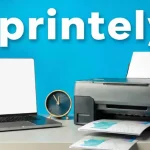Every motorcycle ride brings a sense of freedom, but a sudden crash quickly turns that freedom into a fight for fairness. Cities like Kansas City, with its population topping 500,000, see plenty of busy streets and traffic-packed intersections. Popular for its rich jazz history, vibrant arts scene, and thriving manufacturing sector, Kansas City stays active day and night.
Riders in this city face unique risks, especially during peak hours when accidents strike fast. In these situations, injured riders turn to trusted advocates, such as a Kansas City motorcycle crash lawyer, to help prove they did not cause the collision.
In this piece, you will discover precisely how to build a strong case that proves you hold no fault after a motorcycle crash.
Gather Clear Evidence Immediately
Start with immediate action at the crash scene. Use your phone to take photos of every detail, damaged vehicles, road conditions, skid marks, traffic signals, and any visible injuries. Capture wide shots to show the whole scene and close-up images for specific damage. These images tell a story that words alone cannot.
Gather contact details from witnesses who encountered the crash unfolding. Witnesses provide independent statements that help support your version of events. Their words hold weight in insurance claims and courtrooms. Ask for names, phone numbers, and written statements.
Request a copy of the police report because officers include their initial assessment of fault, which may support your case. Review the report carefully to spot any errors or missing details.
Want more on this? Here’s a piece that pairs perfectly.
Document Your Actions Before and During the Crash
Detail every action you took before the collision. Write down your speed, the lane you used, your signal use, and your position on the road. Mention weather and traffic conditions as well. These facts show your level of caution and responsibility.
Explain how the crash occurred from your perspective and include your movements and reactions. Describe what you saw, what you heard, and what actions you took to avoid the collision. This timeline shows your defensive driving approach.
Keep records of your motorcycle’s maintenance and repairs. Proving that your motorcycle remained in good condition strengthens your case and eliminates claims of mechanical failure as a cause.
Secure Expert Opinions
Accident reconstruction experts study physical evidence to pinpoint the cause of a crash. They analyze skid marks, vehicle positions, impact points, and other technical data. Their reports clarify the fault clearly and professionally.
Medical professionals also play a role. Their reports link your injuries directly to the crash, showing the force and direction of impact. These details align with your version of events and provide another layer of proof.
Highlight Traffic Violations or Negligent Acts
Point out any traffic law violations committed by the other driver. Common mistakes include speeding, failing to yield, ignoring traffic lights, or making illegal turns. Official citations issued to the other driver support your claim.
Prove that the other driver showed negligence. Common examples include distracted driving, aggressive actions, or driving under the influence. Eyewitness accounts, video footage, or phone records reveal these acts.
Stay Consistent and Focused
Remain consistent with every statement you make. Keep your story clear, factual, and steady throughout police reports, insurance discussions, and any legal proceedings. Inconsistent details weaken your credibility.
Follow up with every party involved, police officers, insurance agents, and legal representatives. Provide additional details when needed and stay involved throughout the process.
Proving that you did not cause a motorcycle crash requires focus, swift action, and substantial evidence. With a clear strategy and steady effort, you stand ready to prove your case and clear your name after a crash.
You’ll find even more guides and resources on 2A Magazine.







